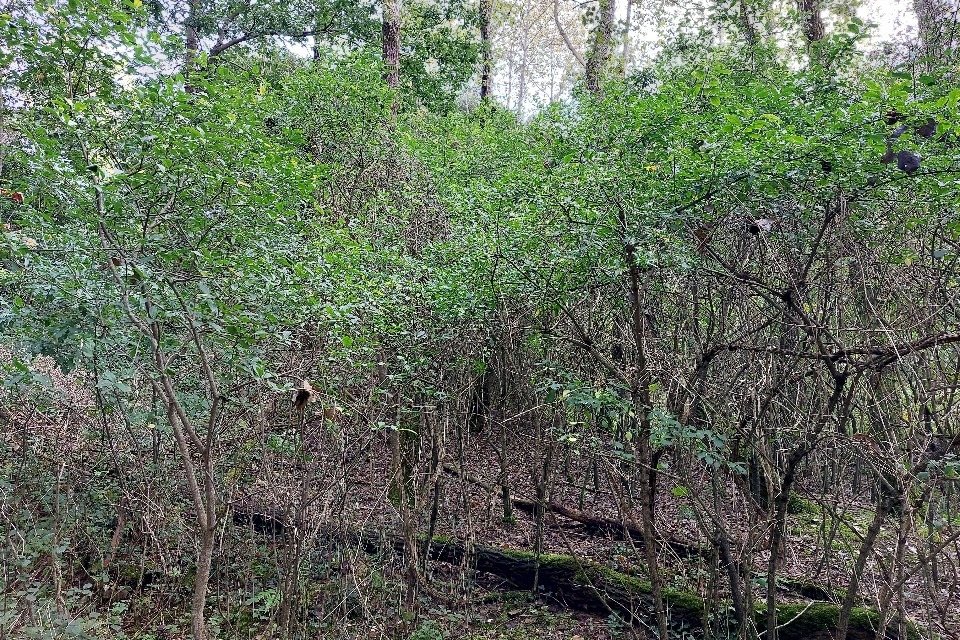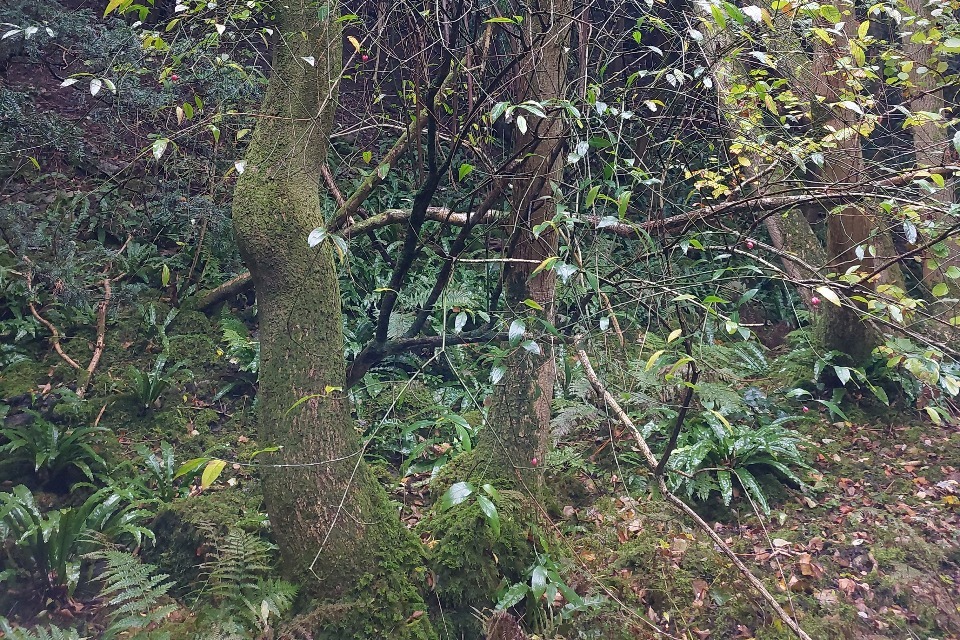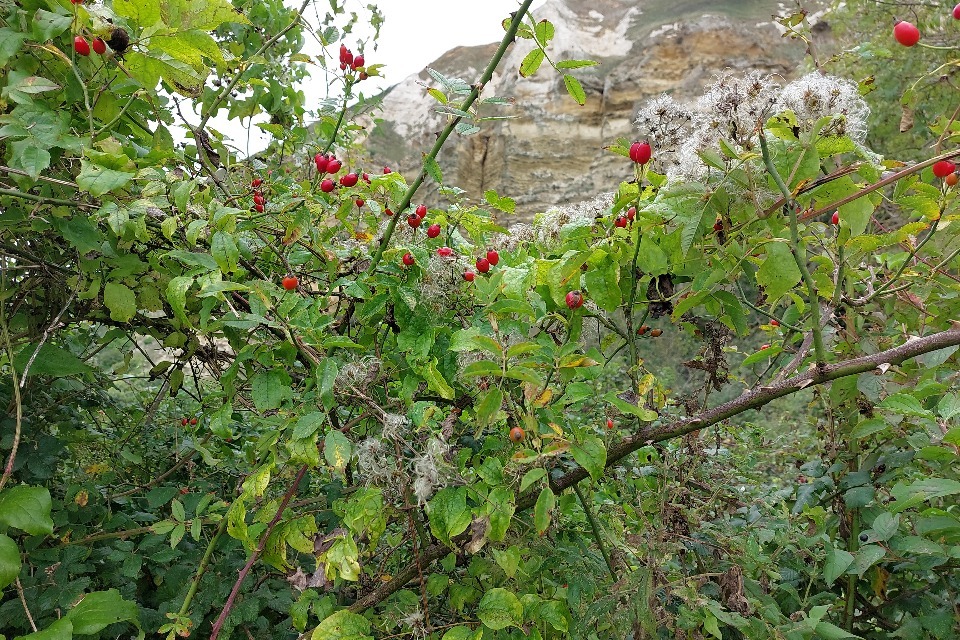Forestart, Shrewsbury
Published 8 February 2024
Applies to England
To create resilient woodlands and treescapes for the future, we need a supply of genetically diverse tree seed from a range of species and provenances.
Forestart are a tree seed supplier with decades of experience in creating and managing seed stands and orchards for seed production. They are working to meet the growing demand for tree seed across the UK.

Side view of densely planted spindle, (c) Forestart
In November 2022 they applied for the first round of Seed Sourcing Grant (SSG) funding to support the development of new seed stands and orchards. The SSG provides support for activities that enhance the quality, quantity and diversity of tree seed sources in England. In particular, the grant aims to increase the number of well managed seed stands and orchards on the National Register of Basic Material.
Robert Chapman is the SSG Project Lead at Forestart and has a background in countryside management and commercial operations management.
Robert Chapman, SSG Project Lead, Forestart:
I strongly believe in closing the gap between commercial and conservation goals to achieve better quality green spaces, utilising native seed both within and outside protected areas.
Creating diverse and native seed supply
Forestart were awarded funding for the establishment of 29 seed stands and orchards for 18 different species, mainly native broadleaves. This will involve the identification, collection and propagation of source material (seeds and/or cuttings) to establish the new stands and orchards. Once completed, the project should help to improve the long-term supply of diverse, native seed for planting projects across England and the rest of the UK.
The provenance of reproductive material (seed, plants, parts of plants) describes the location of the trees from which the material was collected. Great Britain is divided into 4 regions of provenance, identified as regions 10, 20, 30 and 40. The regions of provenance and seed zones map shows the regional boundaries.
Robert Chapman, SSG Project Lead, Forestart:
The Seed Sourcing Grant is allowing us to find, record and collect source material of a diverse and native origin from around the 30 and 40 regions of provenance (which cover most of England and Wales). The development of stands and orchards from this material will also enable a larger stock holding of seed at Forestart, reducing the reliance on non-native seed, or a lack of availability of some species, during years with worse crops.

Spindle showing moss on trunk and forest floor, (c) Forestart
Forestart used the SSG’s Priority Tree Seed Species Strategies to guide their approach to the project. These strategies provide suggested ideal approaches for enhancing the quantity and diversity of seed stands and orchards for a number of key species.

Close up of dog rose, red berries and green leaves, (c) Forestart
Outline of the approach:
-
Conducting a desk study of potential sites to determine natural/native sites across the 30 and 40 regions of provenance which are suitable for collection of source material. This involves utilising satellite imagery, species records and site management plans. Forestart are also working closely with partners, such as the Millenium Seed Bank, to identify suitable sites and contact landowners.
-
Carrying out site visits to assess health, nativeness and purity (lack of hybridisation) of the populations to be collected from. The team will use a set of criteria to ensure populations are as close to native origin as possible. For example, avoiding clearly planted populations where trees or shrubs are of either unknown or inappropriate origin. During the visits, they also check the number of plants and plant density to assess whether it will be possible to collect the necessary quantity and diversity of seed.
-
Collecting source material following the relevant seed strategies. This involves collecting seeds or cuttings from multiple ‘mother’ trees in each location to ensure high genetic diversity. Anyone collecting source material will follow clear protocols to ensure there is plenty of remaining seed for natural regeneration of that population.
-
Planting and growing on seeds and grafts. Collected seeds will be sown and any cuttings will be grafted. These saplings will be grown on by the Plant Production Manager until they are ready to plant out.
-
Preparing and planting the stands and orchards. After careful planning and preparation of the sites, the saplings will be planted out as new stands and orchards. It will take several years to get to this stage, so this part of the project is not funded under the SSG.
At every stage of the project, the team will keep accurate records to ensure traceability.

Wild privet covering the floor, black berries and green leaves, (c) Forestart
Successes and challenges
A year into their project, Forestart completed their desk studies and were spending the winter conducting site visits and collecting and processing source material.
Robert Chapman, SSG Project Lead, Forestart:
We have made good progress in sourcing seed across our target species, with the desk studies carried out proving effective in identifying suitable sites for collection. This is especially rewarding where sites have been hard to access but have proved to be good sources of native seed!
Projects like this always present a few challenges along the way and inevitably require some adaptation. In this case, timely access to sites and poor seed crops for some species have posed a challenge in recent months. However, by researching additional sites and remaining flexible, we have been able to collect from alternative sources and we are on track to achieve our goals.

Close up of hazel seed shown alongside brown dried leaves and faded yellow flowers, (c) Forestart
While this is a large project, many of the same principles apply to smaller projects involving a single stand or orchard.
Robert Chapman, SSG Project Lead, Forestart:
Planning is key, particularly when planting multiple stands or orchards across one site. There are lots of considerations: spacing, ground conditions, light, growth rates, collection methods and pathogens to name a few. Take the time to get it right, the decisions made in the first few years have a big impact for a long time.
Top tips
- Consider your source material carefully and have clear protocols for collecting it.
- Be prepared to adapt and plan for some failures.
- Keep accurate records.
Planning for the future
Developing a seed stand or orchard is a long- term project, and one with no guarantees. It may be years before a stand or orchard becomes productive. However, once they are productive, they can continue to produce seed over decades. Most shrub orchards should last for 25 to 30 years, and tree orchards could last over 50 years.
More information
Learn more about the funding available for managing or planting seed stands and orchards, please visit Seed Sourcing Grant.
Find out more about the National Register of Basic Materials on Marketing forest reproductive material for forestry purposes.

